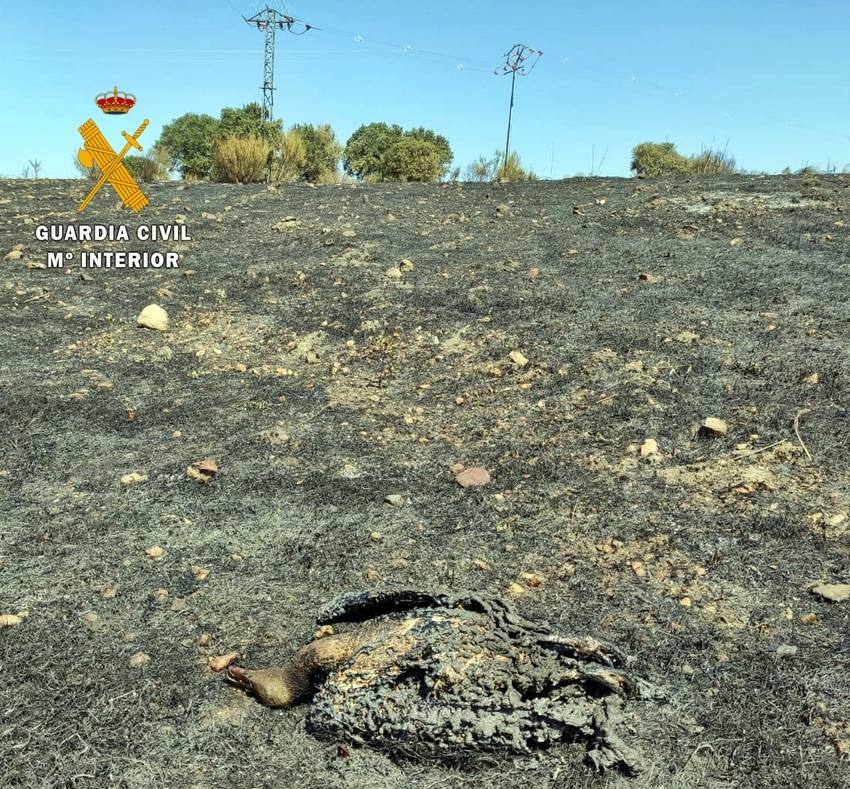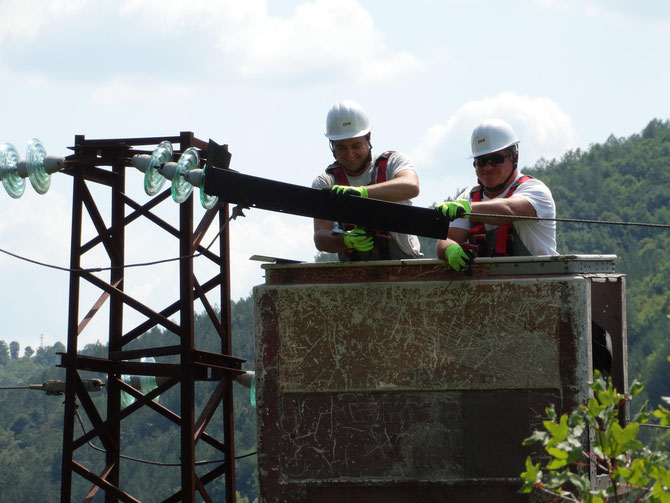
Another Griffon Vulture (Gyps fulvus) died because of electrocution on a power line near Alburquerque, Badajoz, in Spain, which is, unfortunately, a far too common occurrence. Hundreds of vultures die each year electrocuted in poorly insulated medium-tension electricity pylons across Europe – this is indeed one of the main causes of mortality for these scavenging species.
This time though this occurrence had some more far-reaching consequences as the bird fell into a forest, igniting a fire. Poorly insulated pylons not only pose a threat to birds due to the risk of electrocution, but they can also cause fires, causing serious damages to nature and the public.
Bird electrocution can result in serious wildfires
After a wildfire emerged in Alburquerque, the high temperatures, low humidity and wind favoured its rapid spread, leading to the burning of more than 700 hectares. Authorities took urgent measures, with more than a hundred people on the ground working to extinguish the blaze and secure properties. They eventually contained the fire, and the evacuees were able to return to their homes. After thorough investigation, the agents determined the fire’s origin: an electrocuted Griffon Vulture. They found its carcass charred below the pylon and with evident signs of its electrocution.
Dangerous electricity pylons a problem for society as a whole
Wildfires induced by bird electrocution can endanger humans, homes and nature, so it’s critical to mitigate the root cause of the problem! A study published in 2018 shed light on this serious issue. The authors assessed the number of wildfires caused by wildlife electrocution in Spain and calculated the associated economic costs and direct CO2 emissions. They determined that between 2000 to 2012, the economic and environmental costs of bird-electrocution induced fires amounted to €7.6–12.4 M and direct CO2 emissions of 1.8 × 104 tons in Spain.
Mitigating the threat of electrocution
The Vulture Multi-species Action Plan (Vulture MsAP), co-developed by the Vulture Conservation Foundation (VCF) and endorsed by the Convention for Migratory Species, concluded that electricity infrastructures that cause electrocution are a serious but under-estimated threat to vultures.
Pylons with inadequate design and cables without adequate isolation are just one of the many threats that vultures and other birds face daily. Unfortunately, when flying or landing on dangerous pylons, birds often touch the wires, or connect the wires with the pylon, and die as a result of the ensuing electric shock. These incidents, as with most human-caused mortalities, are known to contribute to declines in populations of protected bird species, including vultures, so it is important to reduce and eliminate any potential threats.

Once high-risk electricity lines are identified, there are numerous effective measures that can be used by electricity companies to prevent electrocutions, such as “retrofitting” live wires with durable plastic insulated casings or even replacement of dangerous poles with more modern designs that reduce or eliminate the risk of bird electrocutions. Although this can be logistically challenging and sometimes expensive, many electricity companies are willing and able to cooperate in implementing these measures, also because these electrocutions often result in power cuts and blackouts. Over the last decades, many thousands of pylons have been insulated in many countries, mostly on a voluntary basis, in established and effective collaborations between electricity utilities and conservation NGOs. However, this type of work – and the risk of electrocution, should be a mandatory part of the legal liability of operating these infrastructures, which is not the case. In the long term, selecting pole designs that are less dangerous, or even burying lines underground in high-biodiversity areas seem better options. There are many projects, including our own LIFE-funded projects such as Vultures Back to LIFE and LIFE with Vultures that are working to tackle the threat of electrocution and collision with electricity infrastructure. The MAVA Foundation is also funding projects across the eastern Mediterranean flyway to minimise these threats.



